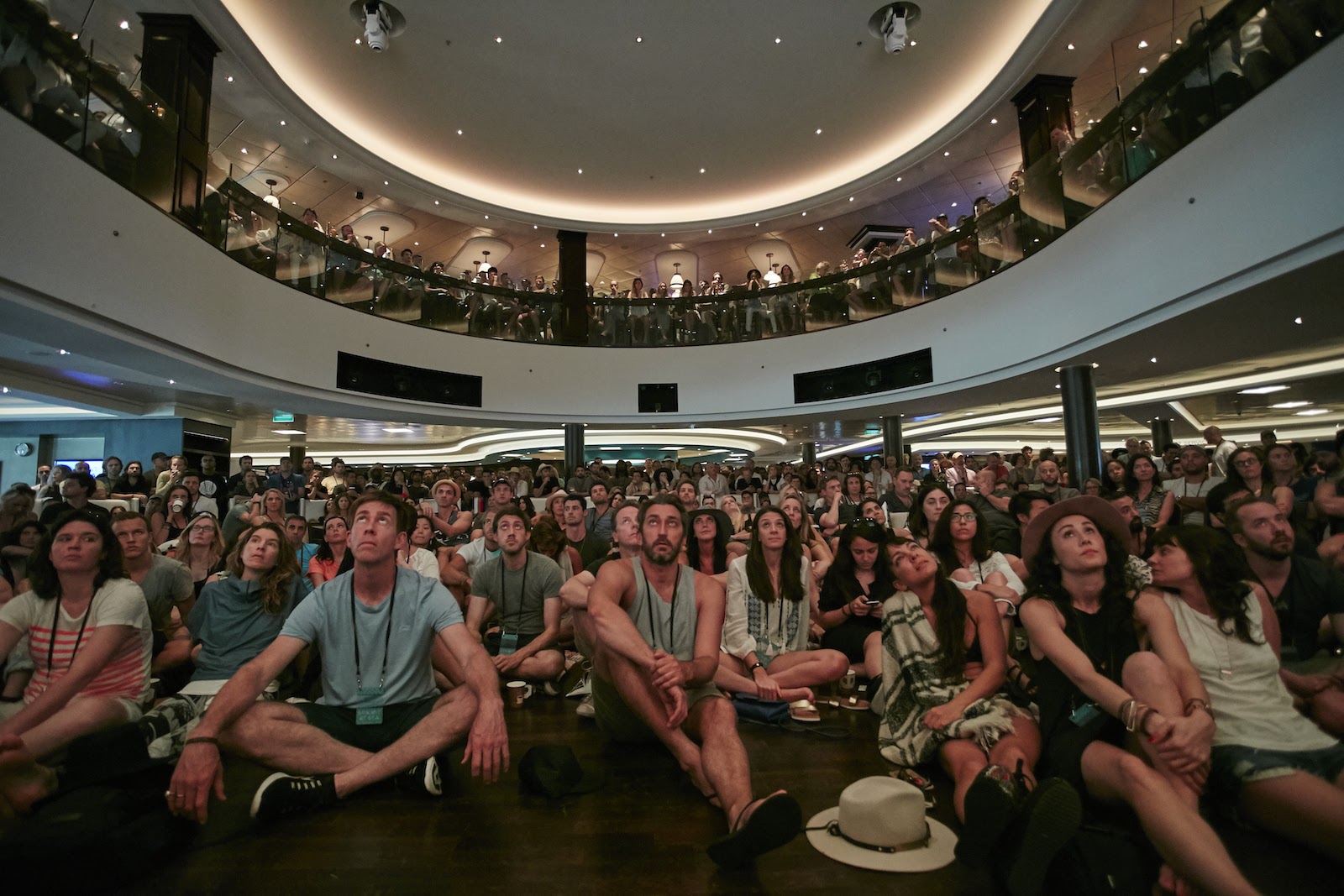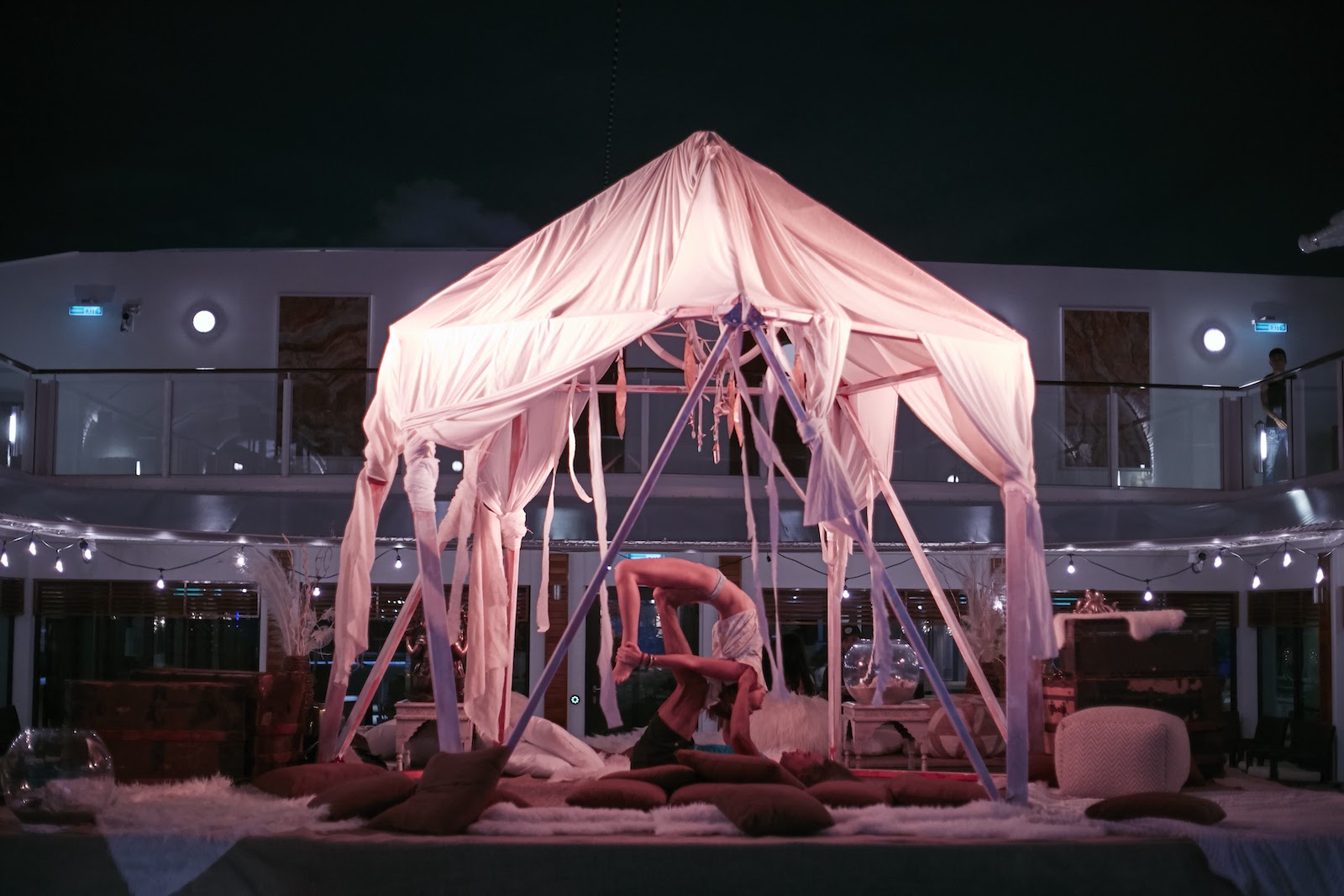Summit Series Sails One More Voyage
Talking to founders Brett Leve and Jeff Rosenthal about the community they’ve built

This November, the third and final
Summit at Sea conference will depart from the Port of Miami, offering a global group of thought leaders a holistic experience unlike any other. One of the flagship events within the Summit Series, the ocean-bound adventure tackles everything from wellness to advancements in the culinary world. From the programming to entertainment and tangential dialogues, it’s proven to be an immersive. Once again, the line-up is impressive—with Quentin Tarantino, Kendrick Lamar, Tony Hawk and Kweku Mandela just some of those involved. Though we know many folks in the Summit community, we haven’t attended any of their events until now. So before boarding the ship next week we wanted to speak with co-founders Brett Leve and Jeff Rosenthal about why this will be the last voyage, what’s to come, and what lies beyond it all.

What was the origin of Summit? Tell us how it began.
Jeff Rosenthal: We were young entrepreneurs in our early 20s when this began. All the co-founders of Summit had various companies or projects they were working on. The simple idea was how cool would it be if we had a peer group. You know, when you’re a young founder, it’s a pretty lonely place and you’re generally learning how to do things by screwing up and not repeating your mistakes. We just didn’t have a big group of mentors or peers that we knew that were also taking risks in building businesses, but we had a pretty expansive vision to what that through all our very different businesses at the time.
Within the first year of us starting Summit, we were hosting events at the White House
We cold-called and Facebook messaged different entrepreneurs, and the first event was nine years ago in Park City, Utah. We had 19 people come together. Six months later, we were up to 60 people, and even in the first initial gathering, a lot of generational luminaries were participating in it. We had a lot of really unbelievable people across entrepreneurship, technology, social impact. And within the first year of us starting Summit, we were hosting events at the White House on behalf of the newly incoming Obama administration.
It was a very exponential growth curve for us. And the initial criteria, this really was, I think, in many ways the first of its kind; just gathered multiple disciplinary entrepreneurs, and that became multigenerational and maximizing diversity as a core component of Summit longterm. At first it was this idea of gathering people that were innovative in their space, and also just people who were kind and openminded, nice people, people that we wanted to be around and be friends with, regardless of personal/professional success. Summit had from the beginning, a very community centric center to it versus being transactional.

Are there any key milestones or highlights along that journey where you really felt like yes, we’re on the path, we’re realizing this vision? It sounds like very quickly in that first year a lot moved ahead, but what about between nine years ago and now?
Brett Leve: I think one of those critical milestones was really when we made the move to acquire Powder Mountain and we crystallized the vision to develop a master-planned community around the idea of supporting entrepreneurial and artistic achievement. It’s a pretty ambitious plan for a couple of guys in their late twenties to try to acquire the largest ski resort in the United States and then reimagine the American mountain town.
You can really allow things to grow if you have that physical community underpinning it
I think that was a moment for us where any entrepreneur, regardless of the venture, the size or whatever, is going to have ups and downs. You’ll have key players and supporters at a number of the different junctures of the stages of the lifecycle of an organization as it grows and expands. But there’s a lot of other people who are the ones making things happen. And I think you always question whether or not those people will stay by your side as things undulate and go from different phases and levels of popularity or whatever. When we made the move to basically institutionalize the values and ideals that the Summit community stood for in perpetuity, all these people signed up to help us fund the project. Effectively, it allowed us to do the first crowdsourced real estate acquisition that we know of, that was one of those points where we really felt like we had the support of the people who were making up this community, not just in their words, but also in their participation and putting their capital to work behind these ideas.

JR: To frame it a little bit, we’re five or six years in to building Summit, and we realized for a community to sustain and grow over time, it needs roots. When we studied some of these communities that have formed, if you look at Sundance, and Redford with the festival and the resort…and you look at the Paepcke family in Aspen with the Aspen Institute and their vision for a place of consequence, intellectualism in the center of the country…and there’s other examples…
You can really allow things to grow if you have that physical community underpinning it.

So where do you see Summit fitting into the landscape of creative gatherings? Everyone talks about different conferences and gatherings in different ways. I heard a couple people talk about Summit as something that’s like TED meets Burning Man. Do you agree with that or how would you describe it?
BL: I don’t particularly like the descriptors just because I think that, you know, it all comes from a crisis of convenience. I don’t think anyone can understand the totality of Burning Man by being described by other events, and the same for TED. I wish that the world was more accommodating to the idea of live events and where live events go because they play such an important role. Everybody’s quick to write one off in exchange for another. I wish everybody could take a vantage point of appreciating the validity of all of these events because they all play such a different role.
Summit is nothing like TED and is nothing like Burning Man. There are certain elements that are fundamental to all of the experiences, whether that’s education, or transformation, or self-awareness, or knowledge exchange, but they’re all doing such a different thing… and they’re all so important that I hate when they get lumped together.

How does Summit at Sea fit into the bigger picture of Summit?
JR: I guess there’s three main components to the overarching Summit community. There are the flagship events, which is what Summit at Sea is right now for us. And we’ve only hosted Summit at Sea three times. This will be our final one. We’ve also hosted events in our nation’s capital. We hosted an event called Summit outside on top of Powder Mountain, where we built a temporary village for a thousand people. Every year, we think it’s really important to have a flagship gathering that allows the thought leaders of these different disciplines to come together and have this experience.As we move on from Summit at Sea, we’re planning another flagship event for 2017 that is sort of the evolution of that event series.

What have you learned from the first two that you’re applying this year to do differently?
JR: Well, they’re always evolving. We can never get it perfect. Anybody that’s a builder or creator of experiences like this is never truly happy with 100% of it, so for us, we always see opportunities to build out spaces more intentionally for the types of interactions that we want to facilitate. This year, we run a half million dollar food purchasing budget and source all organic produce and meat, and local, everything that we could. So the idea of programming all the restaurants, this is the first time that we’ve done this to this level. Earlier Summits had no art program. That wasn’t something that we were aware or conscious of. We started this when we were 22 years old and now we’re 32. We got exposed to all this incredible stuff and incredible people.
BL: Trying to really embody the level of integrity around a fair and balanced perspective, around the issues that we hope to illuminate, all of the content. We work tremendously hard to make sure that it represents sort of the state of the cultural zeitgeist, and touches upon a lot of the big issues that we want these people to be discussing, and illuminating real challenges to a lot of these issues.

It sounds like so much of what you’re planning and what you’re doing is about the experience that people are going to have, and the opportunities that will arise in the serendipitous moments as people, as you said, choose their own adventure. Do you think about the outcome or the net result of an experience like Summit at Sea? And if you do, what’s the dream?
BL: I would say for me, it’s fairly difficult to quantify the outcomes, to understand the outcomes. People share bits and pieces with us, so we kind of have to use those bits and pieces as a way to just imagine the total impact of what we’re doing. I think that’s what’s limiting a lot of the rest of the event planning landscape, is that it’s either too laser focused on intellectual content, or it’s too focused on music, or you know, it becomes a festival… and sort of all of these other live events that are letting themselves be categorically defined by all the events that proceeded them. If you just focused on trying to maximize the conversation, the collision, the relationships through architecting a cadence that gives people opportunities to experience and think and explore and grow, but also have time in between all these things to digest and meet the people around them that are also incredibly passionate…and they just experience something world class, I think that’s where the magic comes from.

Any closing thoughts or burning desires to share?
JR: Building adventure with your friends is amazing and awesome, as you know, like having great partners is almost the best part. And we just feel fortunate we get to build on behalf of such exceptional folks, and it always exposes us to new things, new realities.
Images from SAS 2015 courtesy of Summit Series












